I am looking to "dodge" the bars of a barplot together. The following R code leaves white space between the bars. Other answers like this one show how to accomplish this for the bars part of a group, but that does not seem to apply for distinct bars per factor on the x axis.
require(ggplot2)
dat <- data.frame(a=c("A", "B", "C"), b=c(0.71, 0.94, 0.85), d=c(32, 99, 18))
ggplot(dat, aes(x= a, y = b, fill=d, width = d/sum(d))) +
geom_bar(position=position_dodge(width = 0.1), stat="identity")
Playing with the width variable changes the appearance, but it does not seem possible to get the bars to sit side by side while still retaining their meaningful difference in width (in this graph redundantly represented by the fill colour too).
